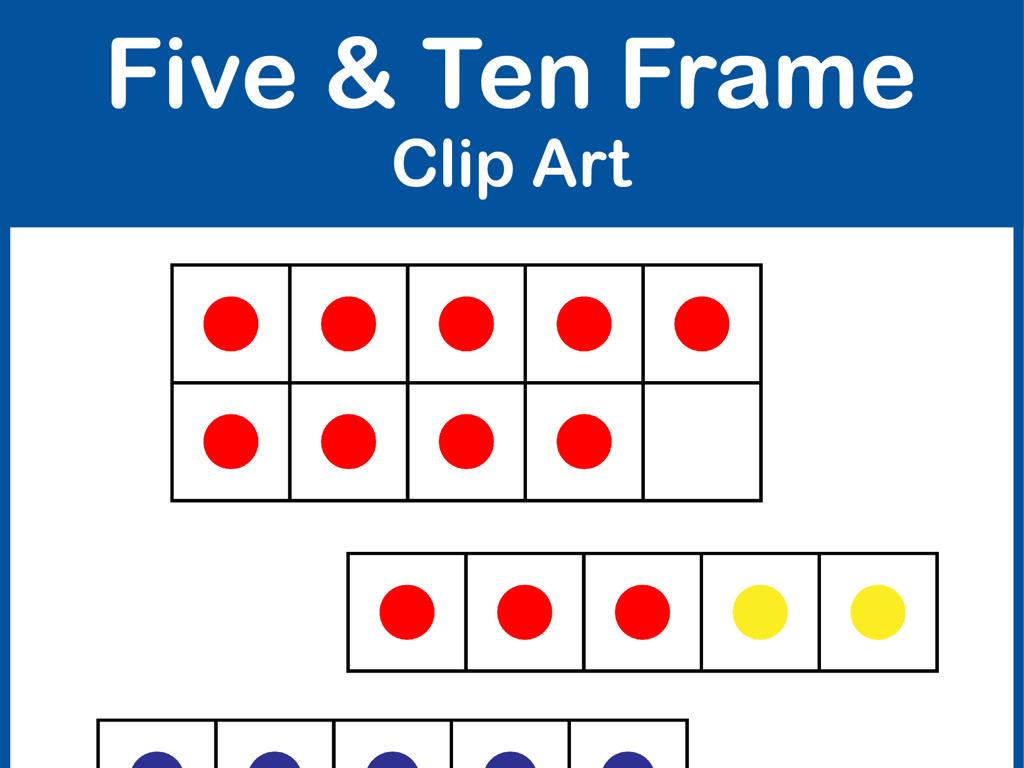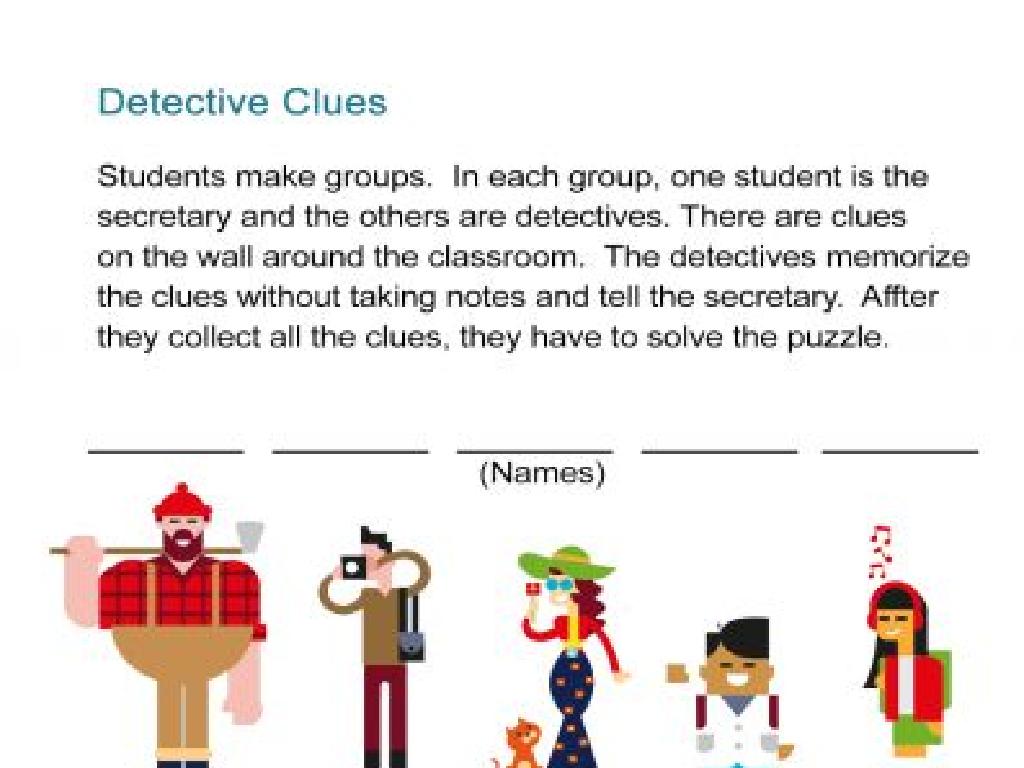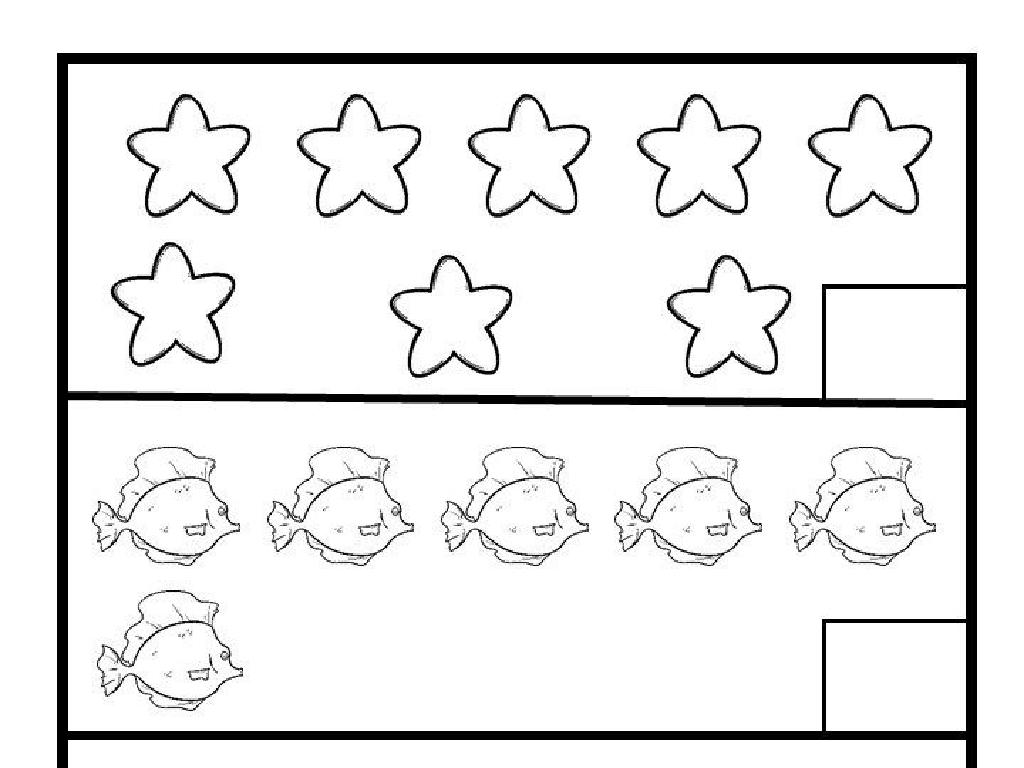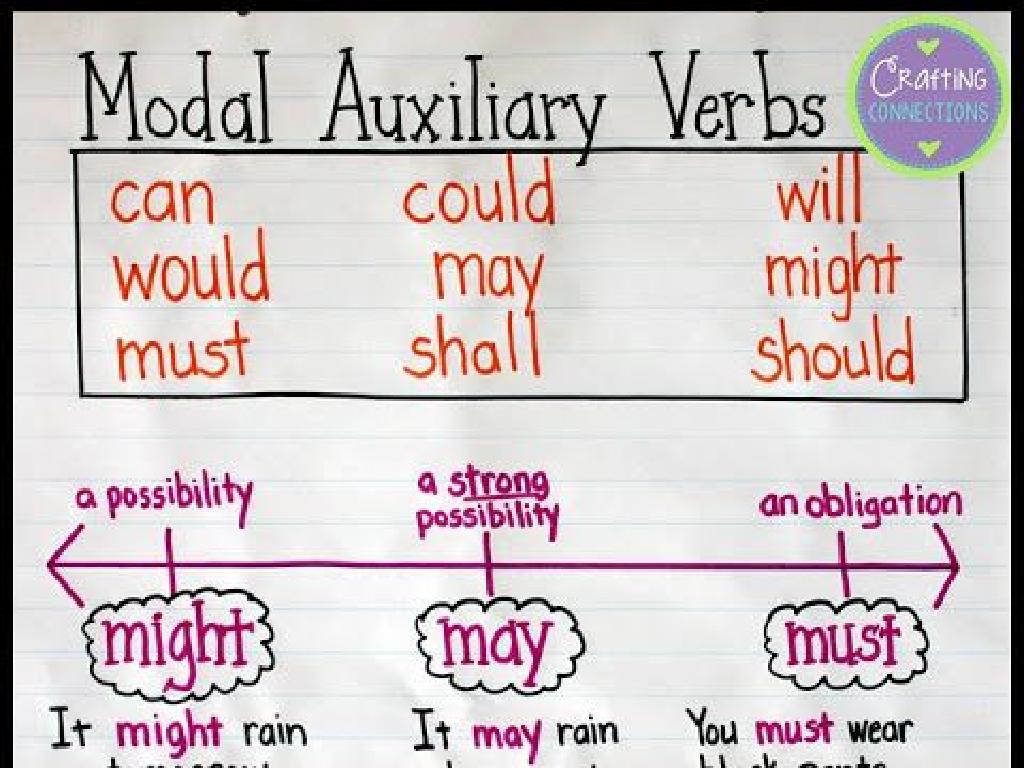Use Semicolons, Colons, And Commas With Lists
Subject: Language arts
Grade: Seventh grade
Topic: Semicolons, Colons, And Commas
Please LOG IN to download the presentation. Access is available to registered users only.
View More Content
Mastering Punctuation: Semicolons, Colons, and Commas
– Importance of punctuation in lists
– Punctuation organizes and clarifies list items
– Semicolons in complex lists
– Use semicolons to separate items in a list when the items are long or contain commas
– Colons to introduce lists
– A colon precedes a list or explanation that follows a complete sentence
– Commas for simple lists
– Commas separate items in a simple series without internal punctuation
|
This slide introduces the importance of correct punctuation in creating clear and organized lists within sentences. Emphasize how semicolons can be used to separate items in a list that already include commas, preventing confusion. Explain that colons are used to introduce a list or explanation and should follow a complete sentence. Commas are the most common punctuation in lists and are used to separate simple items. Provide examples for each case to illustrate their use. For instance, in a list of cities and their states, semicolons can help distinguish between the pairs: ‘Atlanta, Georgia; Austin, Texas; Boston, Massachusetts’. Encourage students to practice by writing their own lists using each punctuation mark.
Mastering Punctuation: The Comma in Lists
– Commas separate list items
– Example: apples, oranges, bananas
– A grocery list can be: ‘apples, oranges, bananas’
– Oxford comma before ‘and’
– Also known as the serial comma, adds clarity
– Practice writing your own lists
– Try creating a list with at least three items
|
This slide introduces the use of commas in lists, emphasizing the importance of clarity in written communication. The Oxford comma, which is placed before ‘and’ in a list, is highlighted as a key element in avoiding ambiguity. Encourage students to practice by writing their own lists, using commas to separate items. This exercise will help them understand how punctuation affects the readability of a sentence. Discuss potential confusion when the Oxford comma is omitted and show additional examples if necessary.
Mastering the Semicolon in Lists
– Semicolons in complex lists
– Use semicolons to separate items in lists that already contain commas
– Example of semicolons in a list
– For instance: ‘I have lived in Albany, New York; Tampa, Florida; and Austin, Texas.’
– Semicolons clarify items
– They prevent confusion when list items themselves include commas
– Practice using semicolons
|
This slide introduces the use of semicolons in complex lists where items contain commas, which could lead to confusion. By using semicolons, we clearly separate each item, making the list easier to read and understand. The example provided illustrates how semicolons are used to separate cities and states in a travel list. Encourage students to practice by writing their own lists, such as ingredients in a recipe or places they want to visit, and use semicolons to separate items that include commas. This exercise will help them grasp the concept and apply it in their writing.
Mastering Punctuation: The Colon
– Colons introduce lists
– Use a colon to show what comes next, like a list or explanation
– Example: Picnic preparations
– ‘We need: sandwiches, lemonade, and cookies.’ shows preparation items
– Lists provide further details
– The list after a colon clarifies or expands on the sentence before it
– Practice using colons
|
This slide focuses on the use of colons in writing, specifically when introducing a list. Explain that a colon acts as a signal that more information, such as a list, is coming next. Use the picnic example to show how a colon can introduce items that are needed. Emphasize that the information after the colon should provide more detail about what was mentioned before the colon. Encourage students to think of their own examples of lists that could be introduced by a colon. As an activity, students can write sentences using colons to introduce and clarify a list of items or details.
Commas in Complex Lists
– Using commas in lists
– Semicolons for clarity
– Example: Commas only
– The basket had apples, red; oranges, juicy; bananas, ripe.
– Example: Semicolons used
– The basket had apples, which were red; oranges, juicy; bananas, ripe.
|
This slide focuses on the use of commas and semicolons within complex lists. When lists contain items that also have commas, it can be confusing to understand. In such cases, semicolons can be used to separate the items clearly. The examples provided show how the use of commas only can make a sentence difficult to follow, while the introduction of semicolons can greatly improve clarity. Encourage students to practice by writing their own complex lists and deciding whether commas or semicolons make the list clearer. Discuss why clarity is important in writing and how punctuation can change the meaning of a sentence.
Practice Time: Mastering Punctuation in Lists
– Write sentences with commas
– Use semicolons in complex lists
– Combine related independent clauses; separate items in lists when they have commas.
– Incorporate colons effectively
– Use before a list or quote: The essentials are: bread, milk, and eggs.
– Focus on clarity and meaning
|
This slide is for a class activity focused on the practical application of commas, semicolons, and colons in list structures. Start by explaining the rules for using commas in simple lists. Then, demonstrate how semicolons can be used to separate items in a complex list, especially when those items contain commas themselves. Next, show how colons can introduce a list or a quote. Emphasize the importance of clarity and meaning in sentence construction. For the activity, have students write their own sentences using these punctuation marks and create a complex list as a class. Encourage them to explain their punctuation choices. Possible activities: 1) Correcting improperly punctuated sentences, 2) Writing a short paragraph using all three punctuation marks, 3) Creating a complex list on a given topic, 4) Peer review of each other’s sentences.
Class Activity: Punctuation Scavenger Hunt
– Search for semicolons, colons, commas
– Pair up to craft complex lists
– One list with semicolons, one with commas
– Present and explain your punctuation choices
|
This activity is designed to help students recognize and use semicolons, colons, and commas correctly in lists. Students should look for examples of these punctuation marks in their reading books, paying close attention to their usage in complex list structures. Working in pairs encourages collaboration and discussion about the rules governing punctuation. Each pair will create two lists: one that appropriately uses semicolons to separate items that already include commas, and another list using only commas. Upon completion, pairs will share their lists with the class, explaining the rationale behind their punctuation choices. This will reinforce their understanding through teaching and provide an opportunity for peer learning. Possible variations of the activity could include finding examples in magazines or online articles, creating lists based on a theme, or even writing a short paragraph using all three punctuation marks correctly.
Punctuation Mastery: Conclusion & Homework
– Review punctuation uses
– Homework: Describe your favorite meal
– Write a paragraph about the meal you love the most
– Use semicolons, colons, commas
– Include a list; use a colon for explanation, and commas to separate items
– Share your work next class
|
As we wrap up today’s lesson, let’s revisit the key points about using semicolons, colons, and commas in lists. For homework, students will apply what they’ve learned by writing a descriptive paragraph about their favorite meal. They should demonstrate the correct use of all three punctuation marks: semicolons to connect related independent clauses, colons to introduce a list or explanation, and commas to separate items within the list. This exercise will help reinforce their understanding and provide a practical application of the rules. In the next class, students will have the opportunity to share their paragraphs, allowing them to learn from each other’s examples and further solidify their grasp of these punctuation tools.





